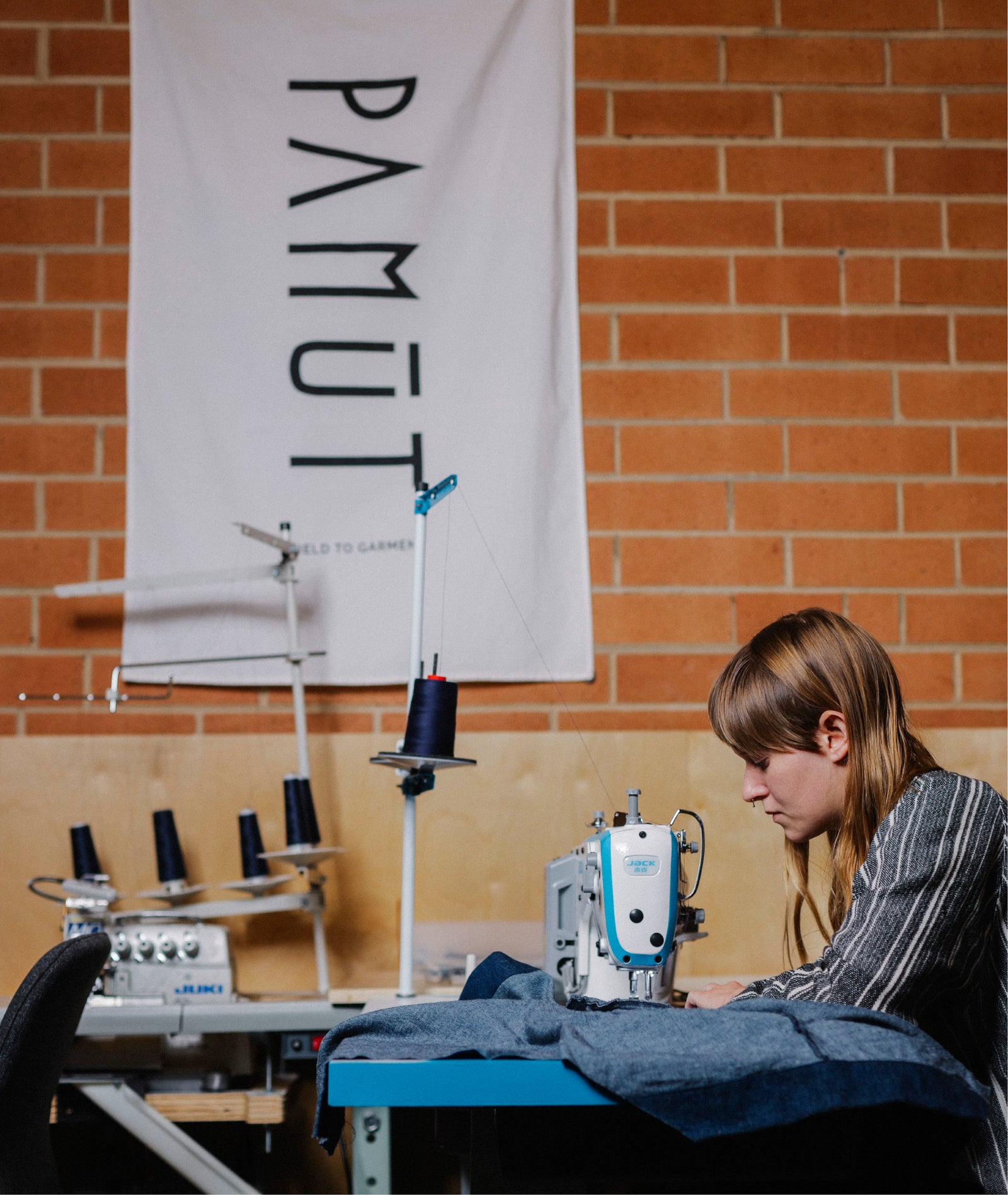As you may have heard, we moved to a new studio at the start of 2021! This was a very exciting transition, since we had long run out of space in our old location (Charity and I were constantly bumping into each other, and the tiny space made keeping clean so much more difficult). We were excited to get back to work after our Winter Break and finalizing our new setup. Here's just a peek at what we're working on day-to-day!
Organizing Our New Shop Area


Our goal (once things are safe again!) is to allow appointments for customers to shop in person. This was great motivation to get our little shop section set up. In addition to being a mini-shop, this area also doubles as a place to store garments that have already been made and are yet to ship, as well as returns that we'll be putting in Sample Sale.
Cutting Your Orders


Our cutting table is located in the center of our studio space, and for good reason! This is where we cut every single made-to-order garment. I'm in charge of cutting all garments, and I usually spend time cutting 2-3 days a week depending on how busy we are. Here, I'm working on cutting out a Mira Top in Graphite. I cut using a handheld rotary blade and I use the pattern as a cutting template. This allows for the greatest precision.
Sewing and Pressing



Both Charity and I do a lot of sewing day-to-day, about 4 hours on average. We both really enjoy getting into the zone and whipping out a batch of clothes. Many people ask how long on average it takes to sew a Pamut garment. This can really vary! To be efficient, we usually sew multiples at once (for example 6 aprons at a time over the span of a day or two). At our most efficient, the majority of garments average about 90 minutes to complete (although this doesn't include cutting and packing). Here, you can see Charity working on a batch of Crossback Aprons that will soon be ready to hang in our shop section!
Block Printing






